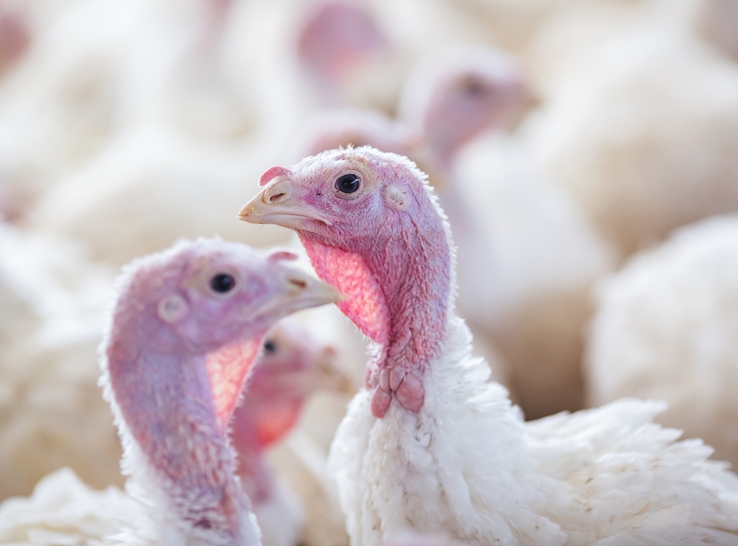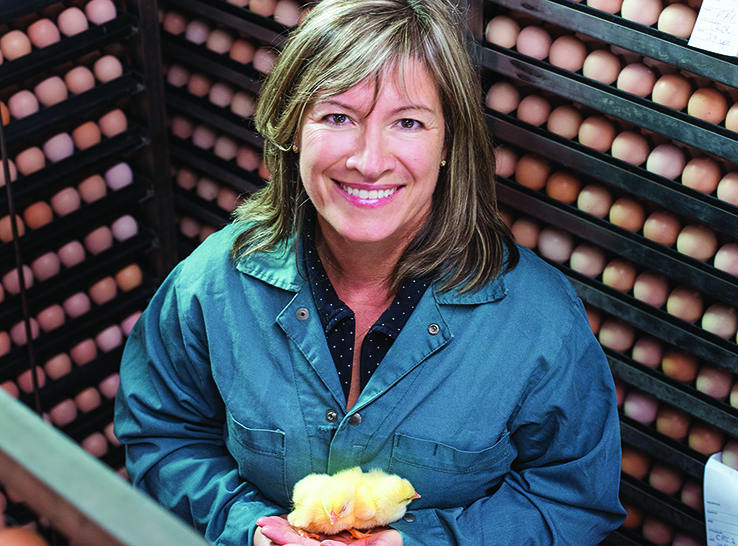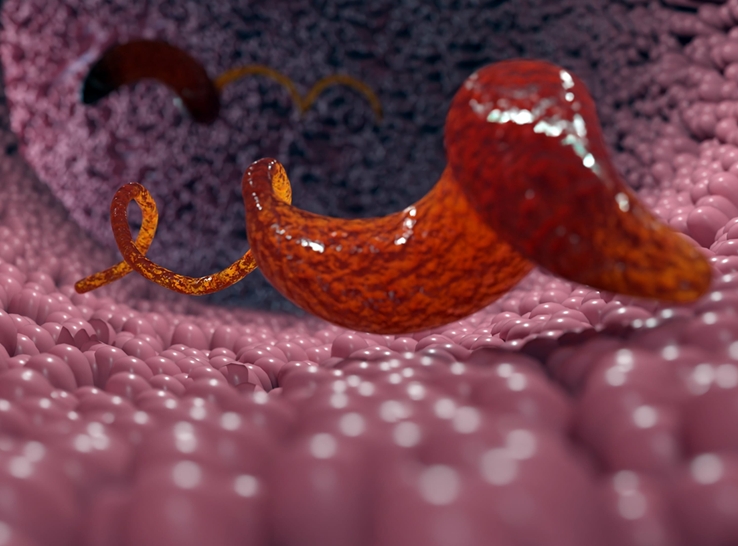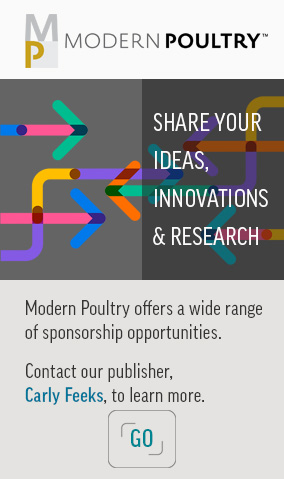By Marcelo Lang, DVM*
Farsight Consulting & Marketing Services, LLC
Every industry has its jargon and buzzwords; the poultry industry is no exception. Among the most recent ones buzzing around the industry, “microbiome” seems to be second only to “sustainability.” A Google search of “poultry microbiome” yields more than 7 million results in less than 1 second.
The excitement about the new microbiome science stems from the idea that microbes can potentially help solve many challenges today’s poultry industry faces, ranging from antibiotic resistance — and the consequent risk of transmitting antimicrobial-resistance genes — to health, performance and nutrient utilization/emission issues.
For years, relatively little was known about the often-invisible world of microbes. Now, the latest DNA technologies have provided tools to see the composition and activities of microbial communities in the gut. This allows us to unravel the interactions between microbes and their hosts and environment.
Much to be discovered
Despite the fast pace of new discoveries and publications, much remains to be discovered about those complex interactions, and most scientists researching the field will caution against jumping to conclusions about what this or that finding really means.
As one microbiome scientist told me, “We’re still learning who’s there; we still don’t know who’s doing what.”
He meant that while the current technologies can identify many species of bacteria in the gut microbiome, we still don’t know how active each one is and what exactly their individual contributions are to the host animal’s health and performance.
With this warning in mind, we can keep high expectations about the promise of manipulating or optimizing the chicken gut’s microbiome and achieving new heights of health and performance with less reliance on antibiotics and less risk of “train wrecks.”
Let’s look at a few promising applications of microbiome science that can help the global poultry industry supply plentiful, wholesome and affordable protein to a growing human population.
Denmark study
In 2021, Randi Lundberg, PhD, and her colleagues in Denmark published a study in the open-access journal Animal Microbiome describing the differences in the microbiome composition of “big” and “small” broilers raised as part of the same flock, fed the same diet and treated the same in all other aspects.
The researchers raised a group of 218 male broilers over 37 days. At the end of the grow-out period, they weighed each bird and then selected the 25 heaviest (“big broilers”) and the 25 lightest (“small broilers”) for microbiome analysis.
To analyze the cecal contents, investigators used a hybrid metagenomic-sequencing approach that combines long- and short-read sequencing. They found that the “big broilers” displayed higher microbial diversity in their individual microbiomes, as well as higher microbiome uniformity within the group of large birds, higher levels of short-chain fatty acids producing and health-associated bacterial taxa, and lower levels of detrimental bacterial taxa than the lightest 25 birds.
Poor microbiome diversity at the individual level and low microbiome uniformity at the group level have been linked to disease in various ecological systems. This led researchers to coin the “Anna Karenina principle” (AKP) for animal microbiomes.
The AKP says that “all healthy microbiomes are alike; each dysbiotic microbiome is dysbiotic in its own way,” which is referring to the opening line from Leo Tolstoy’s novel Anna Karenina: “All happy families are alike, each unhappy family is unhappy in its own way.” It means that the more similar (high uniformity) individuals of a population are microbiome-wise, the lower the risk of dysbiosis and disease within the population.
The findings of this study support the hypothesis that healthy microbiomes (which, in turn, can lead to better growth) are more similar than less healthy or even dysbiotic microbiomes (which, in turn, can hinder optimal growth).
This suggests that AKP effects can develop within subpopulations of a larger population. The authors’ conclusions noted, “Differences in alpha (individual) diversity, beta (group) uniformity, and taxa abundances all seem to be directly associated with growth differences observed in an otherwise similar broiler flock.”
Microbiome-analysis services
Noticing the growing demand for microbiome information, several animal health and nutrition companies started offering microbiome-analysis services to help poultry integrators gain insight into what’s happening inside their chickens’ guts.
One of the best-structured and most useful offerings, in my view, is Cargill’s Galleon Microbiome Intelligence platform. This service combines microbiome analysis with an extensive database of flock-performance results collected over many years and across different regions and feeding and management practices.
Galleon promises to provide practical insights and recommendations to improve flock performance, preharvest food safety and overall gut health while reducing pathogenic gut challenges. One of the advantages of the service’s method is that it is non-invasive; that is, the samples are collected from cecal droppings without the need for sacrificing the animals and removing the organs.
The usefulness of the information provided by microbiome analyses is exemplified by the results of a paper recently published in the open-access journal MicrobiologyOpen. In this study, the research team found that “the variation in cecal microbiota composition in well-performing broiler flocks under field conditions was mostly explained by age, farm, broiler bodyweight, ileum crypt depth, the color of the cecal content and coccidiosis lesion scores.” The authors also affirm that their “study contributes to understanding the development and interaction between intestinal microbiota and broiler health.”
Link between the gut and brain?
Besides providing microbiome-analysis services, animal health and nutrition companies are trying to capitalize on the idea that there’s a “gut microbiota-brain axis,” speculating that it’s possible to modify or modulate certain animal behaviors by using certain feed additives that change the microbiota composition.
For example, a chicken’s behavioral response to heat stress includes “wing spreading, panting, squatting close to the ground, drinking, sleeping, dozing, and sitting but spent less time in eating, standing, and walking,” according to a paper published in the Journal of Animal Science (2018).
In that study, the researchers compared groups of broilers raised under thermoneutral or heat-stress conditions and fed either a control diet or one supplemented with a Bacillus subtilis product.
Birds raised in the thermoneutral condition fared better than the heat-stressed ones. Within the heat-stress condition, birds fed the supplemented diet “spent less time in wing spreading, panting, squatting close to the ground, drinking, sleeping, dozing, and sitting but spent more time eating, foraging, standing, and walking” than birds fed the regular diet without supplementation.
The scientists concluded that broilers fed the B. subtilis supplement could cope with heat stress more effectively by ameliorating heat-induced behavioral and inflammatory reactions by regulating microbiota-modulated immunity.
Quorum sensing and quenching
Two other offshoots of the new microbiome science of significant importance to today’s industry are the concepts of quorum sensing (QS) and quorum quenching.
As animal nutritionist Ioannis Mavromichalis, PhD, reported in a 2018 article: “Scientists discovered that bacteria constantly secrete signaling molecules (autoinducers) that are detected by other bacteria, even from different species. When the concentration of those signaling molecules is low (low bacterial population), then pretty much nothing happens.”
When the concentration increases above a certain level (high population density), the molecular signals trigger a microbiome gene-expression response, resulting in certain changes in the microbial population. This is called QS, and it is a significant phenomenon because it is used by pathogenic bacteria such as Escherichia coli, Clostridium perfringens and Salmonella Enterica to initiate an attack on the animal host or to form biofilms that will resist the host’s immune system and antimicrobial treatment.
The inhibition of QS is called quorum quenching, and it is based on providing a molecule that antagonizes the real autoinducer or an enzyme that degrades those signal molecules. Today’s poultry professionals can use certain probiotics or postbiotic products to exploit quorum-quenching effects against pathogens.
In a recent scientific report published in the well-known journal Avian Pathology, a group of poultry scientists tested a peptide-containing cell-free spent media (CFSM) from a strain of Enterococcus faecium in necrotic enteritis (NE)-challenged broilers in two battery-cage and one floor-pen studies. Results showed a significant reduction in NE mortality. The expression of QS-controlled virulence genes was found to be significantly repressed by CFSM during the mid-logarithmic stage of C. perfringens growth. These results showed that bioactive peptides reduce NE mortality in broilers by interfering with the QS system of C. perfringens and reducing bacterial virulence. Curiously, while interfering with the expression of virulence genes, the CFSM didn’t alter the treated birds’ microbiota composition.
Take-away messages
So, what conclusions can we draw from all the scientific and commercial attention to the microbiome?
It’s clear that the microbiological environment of the chicken’s gut is much more complex than previously thought. At the same time, several external factors are putting additional pressure on today’s poultry professionals to develop more sustainable ways to optimize chicken health and performance, reduce the risk of foodborne infections, minimize the use of antibiotics and enhance animal welfare. Given the critical importance of maintaining the intestinal health of chickens to achieve all these goals, the expectations for significant breakthroughs in microbiome science couldn’t be higher.
While this new field is growing fast, much remains to be understood. For this reason, I want to encourage animal health and nutrition companies to continue developing their new products and services on a solid scientific foundation, even if that means making more investments and taking more time to bring their products to market. The payoff for those who finally harness the potential of the gut microbiome will certainly offset the extra time and money required to get there.
As for poultry scientists, veterinarians, nutritionists, production managers and professionals who make today’s poultry industry such a thriving sector of the global economy, I recommend keeping up to date with scientific research in this area.
Keep in mind that one of the most important driving forces behind the growth of microbiome science is the interest in finding new, more sustainable solutions to human and animal diseases, fighting the threat of growing antimicrobial resistance and reducing the environmental impacts of producing healthy food for the global population. The answer to all these challenges may already be inside the chicken’s gut, just waiting to be unleashed by you and other poultry professionals.
*Dr. Lang is an industry trendwatcher with more than 35 years’ experience in poultry. After working for several animal health and nutrition companies, he opened his consultancy, Farsight Consulting & Marketing Services. He is not involved with the marketing of any products mentioned in this article.
References
Lundberg R, Scharch C, Sandvang D. The link between broiler flock heterogeneity and cecal microbiome composition. Anim Microbiome. 2021;3:54. https://doi.org/10.1186/s42523-021-00110-7.
Kers JG, de Oliveira JE, et al. Associations between phenotypic characteristics and clinical parameters of broilers and intestinal microbial development throughout a production cycle: A field study. MicrobiologyOpen 2020;9(11):e1114. https://doi.org/10.1002/mbo3.1114.
Wang WC, Yan FF, Hu JY, Amen OA, Cheng HW. Supplementation of Bacillus subtilis-based probiotic reduces heat stress-related behaviors and inflammatory responses in broiler chickens. J Anim Sci. 2018 May 4;96(5):1654-1666. https://doi.org/10.1093/jas/sky092.
Mavromichalis I. Could quorum quenching reduce animal antibiotic use? Feed Strategy. Published May 1, 2018. https://www.feedstrategy.com/blogs/animal-nutrition-views/blog/15444476/could-quorum-quenching-reduce-animal-antibiotic-use.
Jaramillo-Jaramillo AS, Coulson TJD, Hofacre C, Jones M, O’Neill L, Nguyen N, Labbe A. Effect of in-water administration of quorum system inhibitors in broilers’ productive performance and intestinal microbiome in a mild necrotic enteritis challenge. Avian Pathol. 2023 Jul 24;1-14. https://doi.org/10.1080/03079457.2023.2224260
Editor’s note: The opinions and/or recommendations presented in this article belong to the author and are not necessarily shared by Modern Poultry.







